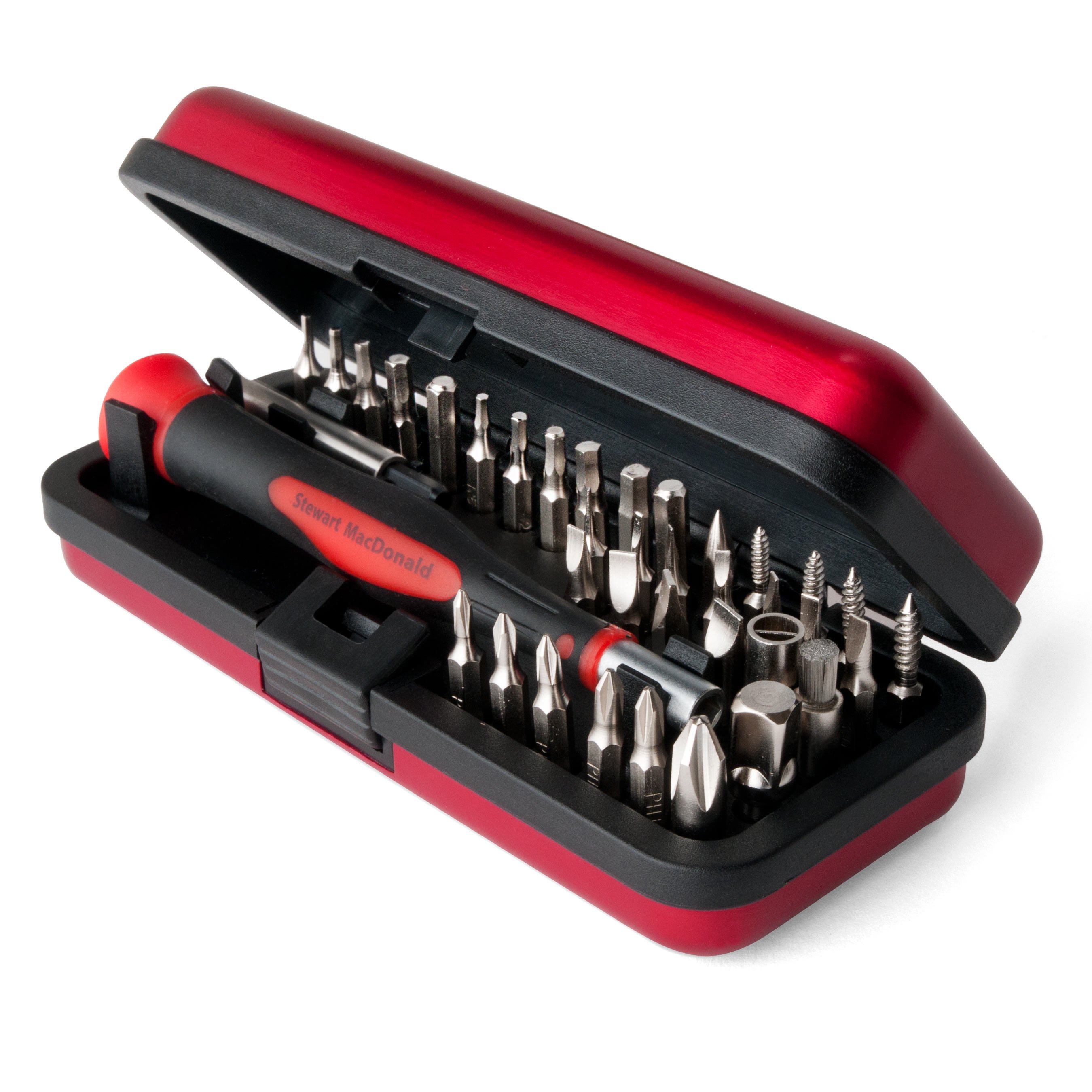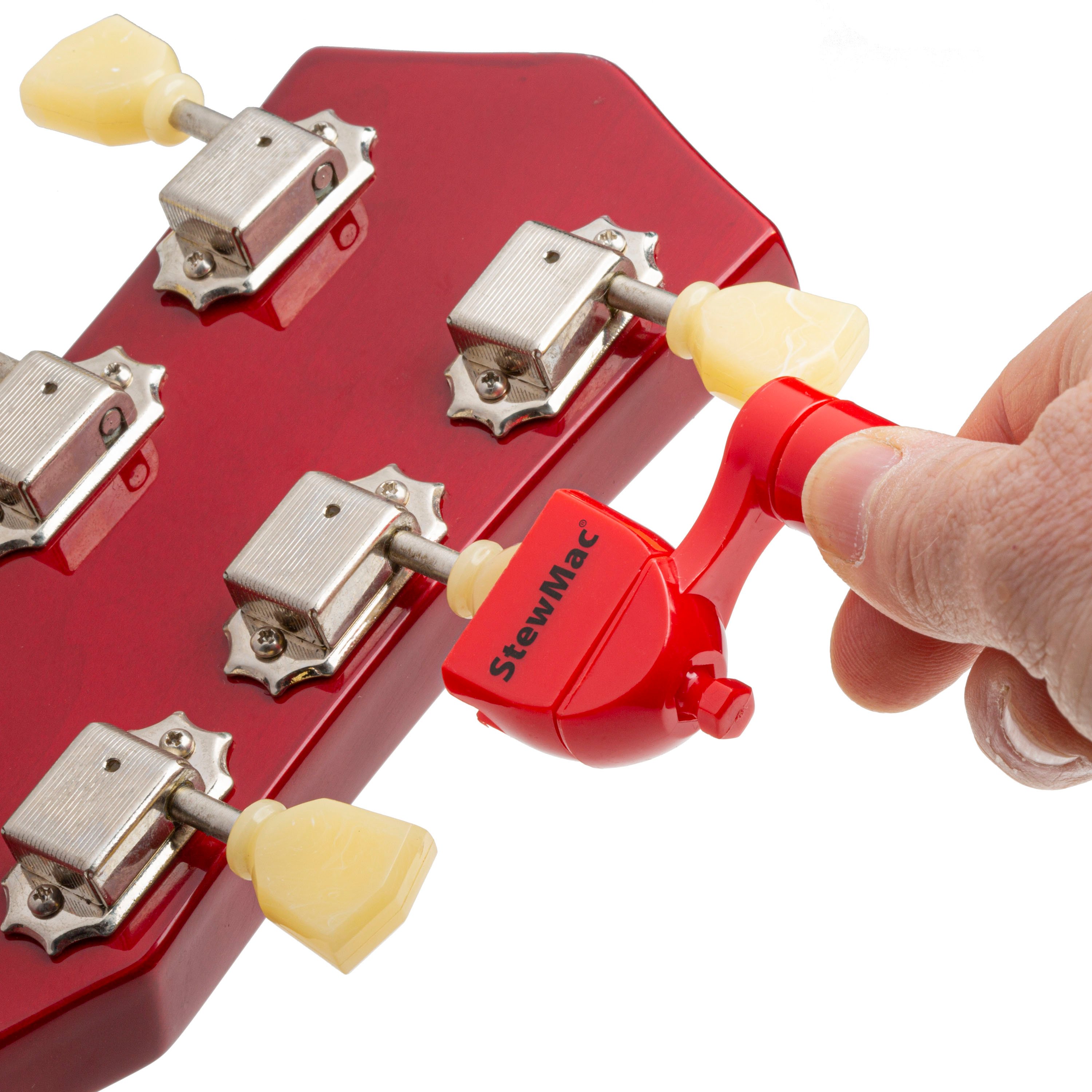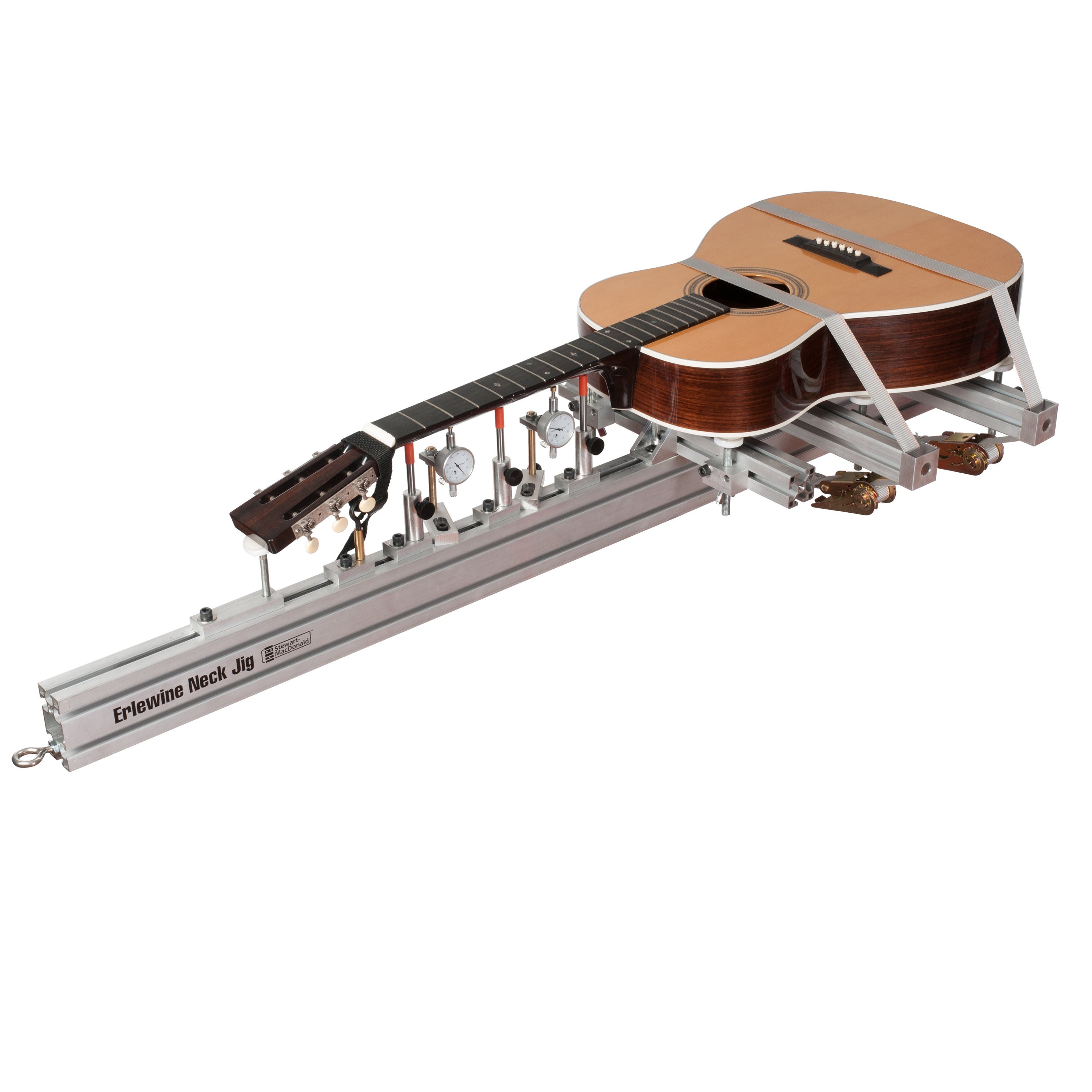Inspecting a historic guitar
Issue 242 May 07, 2015
Dan Erlewine first saw this Tele back in the 1960s, before Mike Bloomfield recorded with it on Bob Dylan’s Highway 61 Revisited album. That was also before Bloomfield and Dylan were booed for going electric at the 1965 Newport Folk Festival. And before Bloomfield recorded the first Paul Butterfield Blues Band album with this guitar. There’s a lot of history in this Telecaster!
About the guitar in this video: This is the 1963 Tele that Mike Bloomfield used to record iconic guitar solos with Bob Dylan and the Paul Butterfield Blues Band in 1965. It’s been chopped into a lefty configuration! Dan explains in this video…
- The backstory on this famous guitar
- Checking to see if the parts are still original
- Removing the neck to test the truss rod
- Fret buzz fixed by new strings
Video Transcription
[on-screen text reads: Stewart-MacDonald - Trade Secrets!]
The backstory on this famous guitar
Dan Erlewine: This is the Telecaster that Mike Bloomfield opened up "I Got My Mojo Working" on the first Paul Butterfield Blues Band album. It's also the guitar that I saw him play in 1963, when I was in a band called The Spiders. Jay Edwards and I were there watching the Mike Bloomfield R&B band at the Michigan Union. We didn't know anything about him or who he was, and then, I never thought too much about him again until the Bob Dylan album came out, "Highway 61 Revisited" [on-screen text reads:1965: Bloomfield used this Telecaster to play the leads on Dylan's album]. And everyone I knew went to school on the guitar solos and the leads and the backup on those songs, like a Rolling Stone. That summer of '65, they played at Newport, the Newport Folk Festival, and he backed up Bob Dylan there, and also sat in with the Paul Butterfield Blues Band, which he later joined. Bob Dylan going electric and Butterfield being electric, they got booed off the stage, because it was all bunch of folkies and they didn't want to go electric.
And that was a big moment in history. End of the summer, Bloomfield had joined the Butterfield Band, when they recorded that first album that fall. And he used this on that album. We saw him play with the Butterfield Band in December of '65. And out comes the Butterfield Band with Elvin Bishop, Mark Naftalin, Jerome Arnold, Butterfield and Mike Bloomfield. And they killed us, just a wall of sound. And we became blues band, right then and there. A month later, Bloomfield's back again. Butterfield, I should say. And Bloomfield doesn't have this. He has a gold top Les Paul, because he had just traded this to a guy in New York City, named John Noose. John Noose was a left-handed player. He got this guitar, and you can see that there's holes from strap buttons all over the horn.
It was one here or one there, one here, one there. He was trying everything to get it to play, finally cut it away. Or had it cut away. And that would've been back in 1965, 66. Who knows how long he played it before he did that? Anyway, I'm particularly interested in checking out this guitar for the man that has inherited it, when John Noose died, two years ago, and authenticate it, tell him what's right or wrong with it. And I thought it would be fun if we all went through that together.
Inspecting the guitar for issues
The first thing I always do, and most of you probably know that, is sight the neck. It's got a little bit of a back bow in it, going back that way, maybe the truss rod's too tight.
Maybe these strings, they're nines, they're too wimpy. Maybe it needs some beef. What happens is it's buzzing. I can get rid of some of that by raising up the bridge saddles, but I couldn't get rid of... That one is a high fret. It's right down here. The first fret is popped up. That could take a radius block. Seven and a quarter, that's what this board is. And clamping on all three frets and press that down level to the others with a little glue. But I'm just going to leave it, unless somebody asks me to do that. We're just inspecting this.
[Dan takes off the guitar strings using a StewMac String Winder]
Checking to see if the parts are still original
My first thought when I saw the nut was that it was the original nut and it was trimmed up with a nice little piece of rosewood there. But then, as I got deeper into it, I decided it's not. Because the string spacing is different than the worn in spacings on the rosewood. That would've come back when the nut was way low in the slot from the factory. And you wind the strings and a strong angle to the bottom of the post, and it makes those marks in the rosewood. So somewhere along the years, somebody put a different bone nut in this, but it is bone. Going on down the fingerboard, this guitar has been refretted with the right size of frets, maybe more than once. I don't know. But they pulled the frets out, up and out, and they should have driven them out sideways.
It's well known, back in this era of Fender, installed the fret sideways with a strange machine that pulled them in. That left the barbs down underneath the wood. Well, if you come in with nippers and pull them up like this, the barbs make chips. There's a big one, big one, and there's probably chips that half the frets all the way down the neck. If it gets refretted, they can be fixed and look pretty good.
[Dan sets a StewMac Radius Gauge on the fretboard]
Something else to know is that it is a seven and a quarter inch radius. Whoever fretted this didn't do a lot of sanding or leveling, which is what I would've done on a guitar like this. It's got a thin fingerboard. You don't want to take much wood off.
Let's take the neck off and see how the rod works. This is an L series serial number, it's L11155. And according to George Gruhn's book, A Guide to Vintage Guitars, that would make it 1963. So that jives. I'm also going through my screwdrivers and picking out the most sharp one of that size, because there's a lot of rust and dirt down in these. I don't want to be a guy to strip them out or maul them.
There it is. The 3rd of August, 1963 B. So George is right about the year, and B means it's one in five eights width at the nut. That's what a B width means. And the first thing you do with any guitar is loosen the truss rod [on-screen text reads: Truss Rod Wrench for Fender - Don't strip your Fender nut], to see if there's tension on it, not tighten it. And this feels a little snug. It could be snug in the wood hole or it could be snug on the threads. I'm going to go loosen it. It feels stiff, but I don't think it's got tension. I think it's just dirty.
Now it's loose, maybe a eighth of a turn, and it lost any grip that it had on the truss rod. And it is tightened the hole. It's 8-32, that's the thinnest of the Fender truss rods. And you want to be real careful, because those are the ones that break the most. What I'll do is lubricate this with a little Vaseline or machinist wax. Put a little bit on the face and put it back on, and see what it does. Here we go. That's moving right away. That's like a eighth of a turn. There's a little bit more.
It's got a good action, more than we need, because it's got a slight back bow in it, to begin with. Right here in the neck cavity, we have a shim. I think that's probably factory. It's not just cardboard. It's like phenolic or something. I've seen the red ones a lot. I don't recall seeing a gray one, but it's been a long time. If it was my guitar, I'd pull that out and try to set it up without it. Because it creates an air gap and can even warp the neck, when the screws pull it down tight [on-screen text reads: StewMac Guitar Tech Screwdriver Set - Specially made for Fender]. For now, we're going to get some screws off this thing and take a look inside.
[Dan unscrews all the pickguard screws and removes the pickguard]
That's the color of that guitar was when I first saw it. And when I look at these pickups, right away, I thought "something's weird with the wires." And I called Lindy Fralin and sent him a picture of both pickups. And he said "those are 68s." He could tell by the wires. It's plastic and it's got colors. It's not the cloth wire. And he also said that, on the bridge pickup, they shouldn't be sharp. They're very sharp on the pole pieces. You can feel them. He goes, "No, those would've been tumbled."
There you have it, 10-63. So this is made in October. The neck was made in August. That's typical of Fender. Sometimes they were about two months apart with the neck and a body. And in here, we have replace pots. These are 1 meg. They would've been 250K. 1376636. That's a 1966 pot. I'd say the switch is original and was wired onto with the new pickups, which are 1968 pickups. Interesting. I'm curious to see what the power of these pickups is, what their output is. And I'll check that next. I'm using a multimeter [on-screen text reads: Fieldpiece Digital Pocket Multimeter - Basic meter for guitar work] on the 20K range, to read the pickup output. I'm grounding on the bridge plate there. 5.94. 5.95K on the bridge, 6.92 on the neck. And those are both very typical for those pickups.
Fret buzz fixed with new strings
I put 11s on this and it's playing great. It got rid of that string buzz. Pulled that first string up enough, and it pulled all the... All the frets are playing now. They could be better. It needs a fret dress or even a refret, but all in all, just with a little tweak and it's playing like a million bucks. And it would probably sell for more than that.
[Dan plays the guitar and starts singing]






